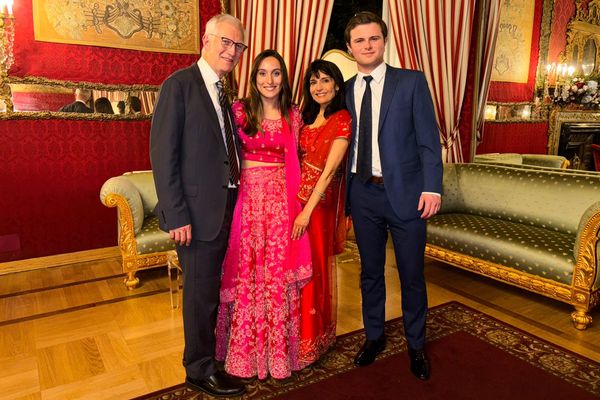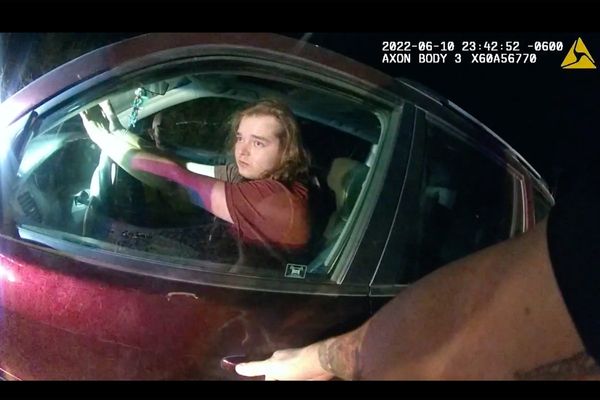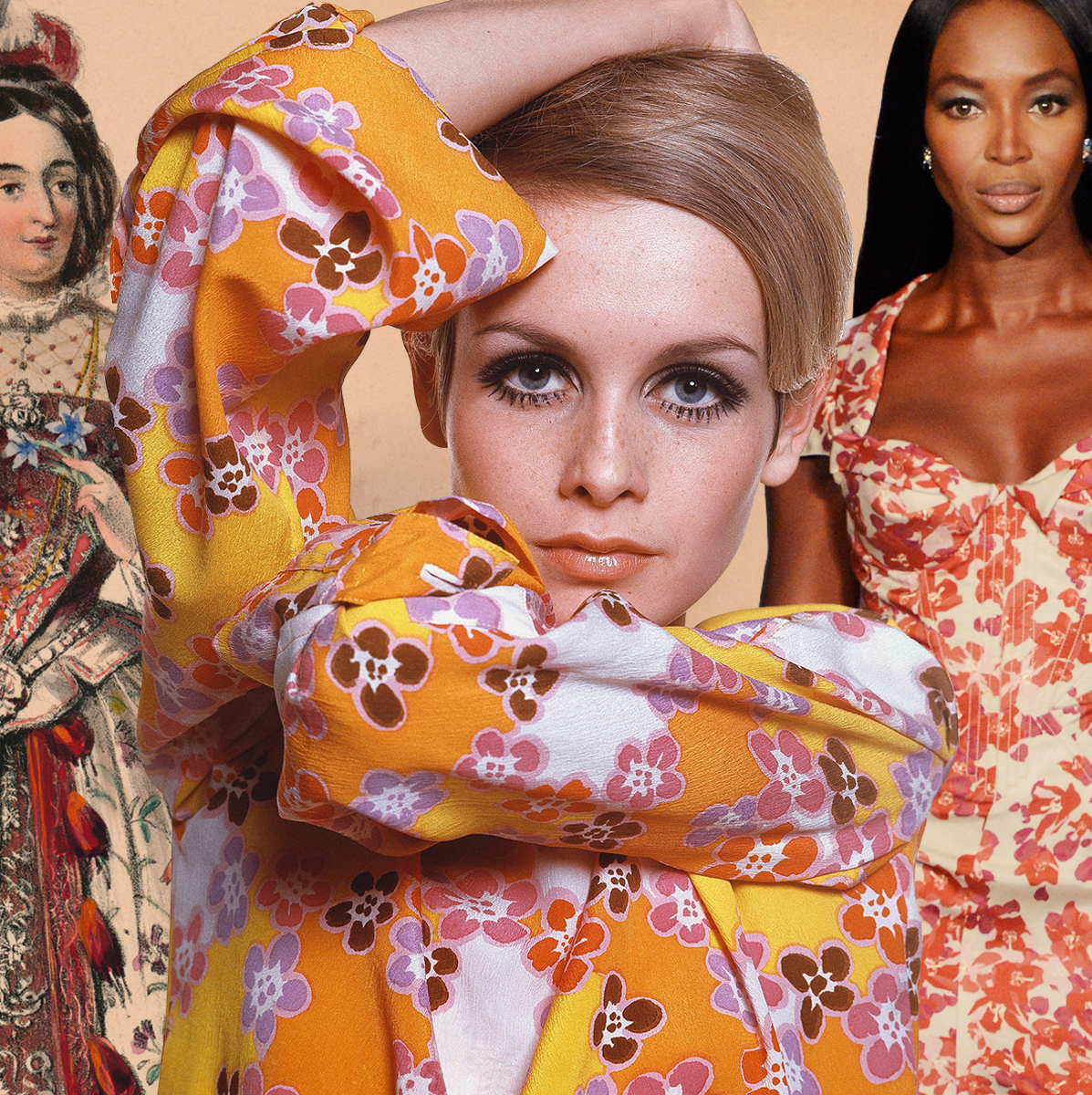
Fashion loves a flower, from Christian Dior's rosettes and Chanel's camellias to Mary Quant's coo-coo-ca-choo daisies and Laura Ashley's prairie patterns. The Spring 2025 runways planted a few more in fashion's metaphorical garden; Chloé's Chemena Kamali, for one, had a field day and showed bouquet-printed chiffon gowns and Chantilly lace bloomers that helped the boho trend revival bloom.
Spring's fresh-picked prints weren't exactly novel—or groundbreaking—but they well illustrated the industry's long-standing infatuation with florals. Loewe's hoop-skirt gowns in blush, ivy, and baby blue botanical prints looked similar to what upper-class ladies wore for promenades around Victorian-era England, while Erdem's see-through drop-waist dresses embroidered with wildflowers and crystal fringe were meant for modern-day flappers. Fashion history buffs will also note how Marni's Francesco Risso time warped back to post-World War II Paris; the creative director's rosette-patterned A-line skirts and scarf blouses were reminiscent of Dior's from the late-'40s, which revived romanticism in fashion after years of austerity and rationing.
But you don't need to be a capital-N, capital-F Fashion Nerd to enjoy this spring's references to floral prints across the decades. That's where Marie Claire's visual history lesson and trend breakdown comes in handy, leaving you to stop and smell—er, shop, rather—the roses in peace.
Victorian Florals
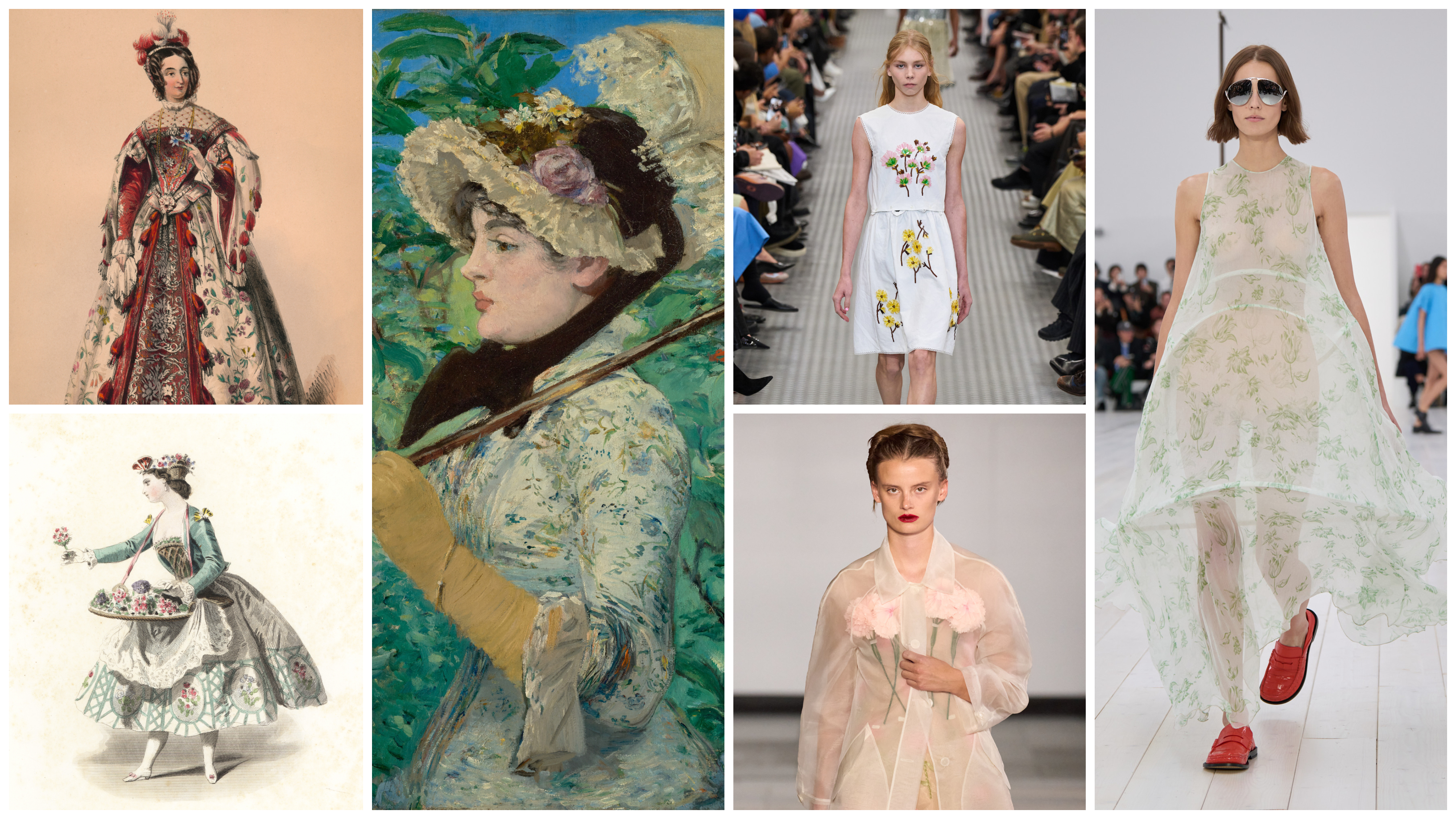
The Victorian era, which spanned Queen Victoria's reign over Great Britain and Ireland from 1837 until she died in 1901, was a monumental era for floral fashion. Led by the Queen's love for flora, women's gowns were detailed with hyper-detailed botanical prints. Fresh blooms were often integrated into daily wear, tucked into headpieces or held in silver bouquet holders.
The roses, peonies, and baby's breath motifs seen throughout Loewe's Spring 2025 paid homage to the epoch, while Miu Miu's naturalistic embroideries looked ripped from a floriculture textbook. Meanwhile, Simone Rocha took inspiration from the portable bouquets popular during the Victorian era—also known as "tussie-mussies" or "nosegays"—with carnations pressed between organza and carried in hand.
Art Deco Flora
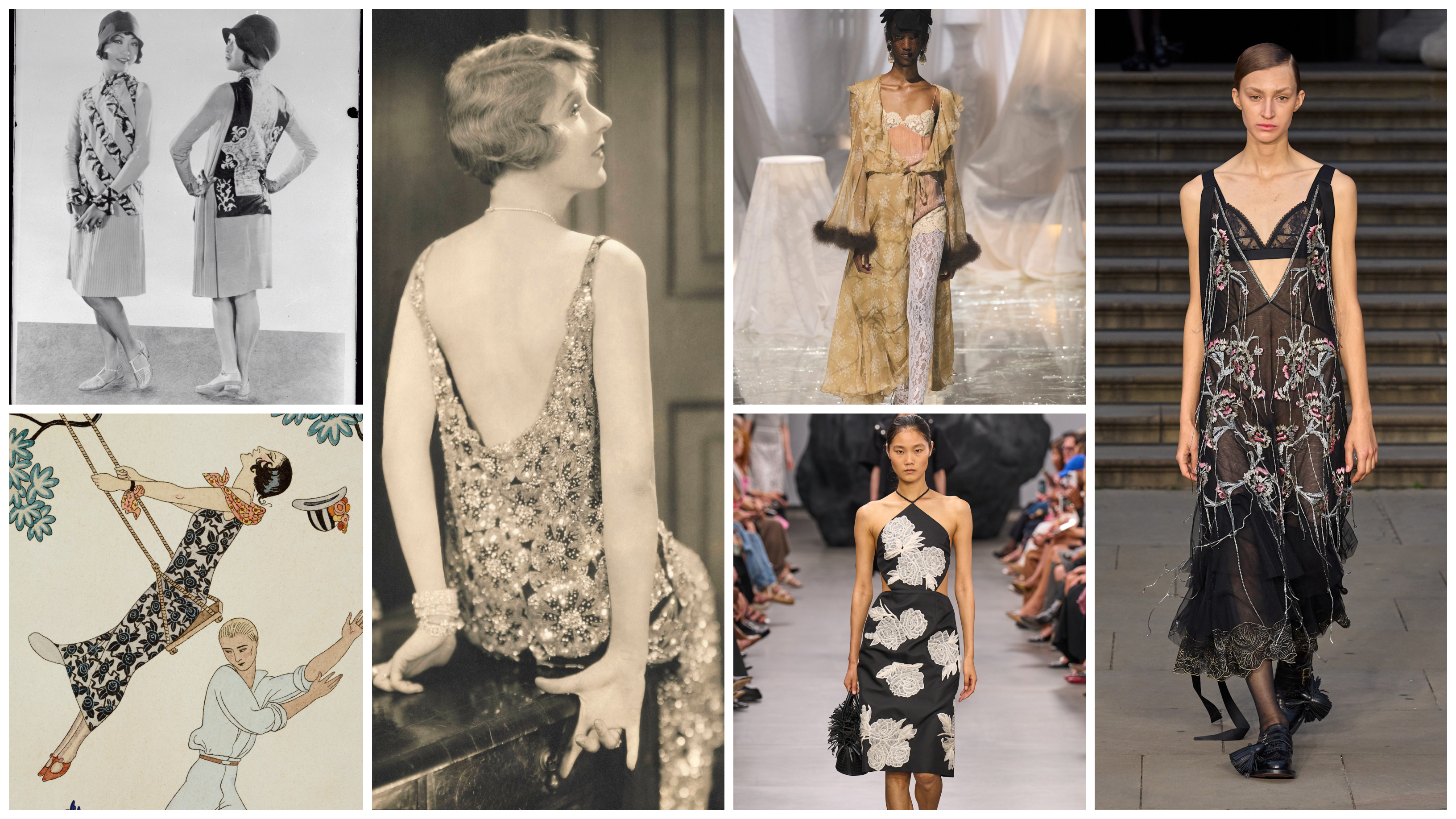
Recognizable by sleek motifs, bolder outlines, more geometric interpretations, and embellished with flashy sequins, Art Deco-inspired florals flourished across spring's runways. Erdem Moralioglu had Roaring Twenties muses on the mind; the Erdem designer cited Radclyffe Hall, a prominent literary figure of the early 1900s, as inspiration and set the scene well with sensual, flapper-esque gowns stitched with flowers. Meanwhile, at Michael Kors Collection and Valentino, flowery lace and rosette silhouettes called back to the art movement.
Post-WWII Prints
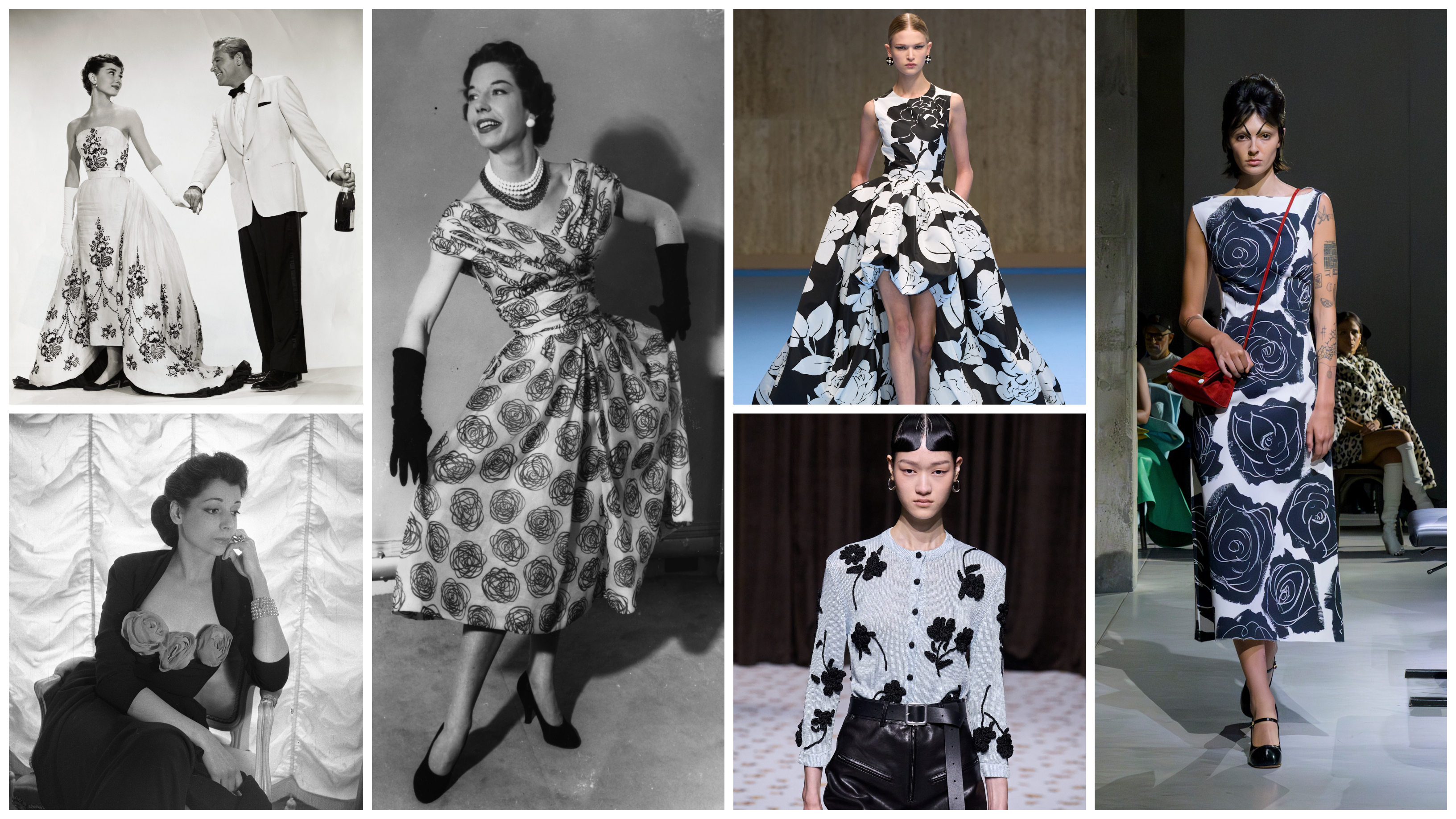
Pioneered by Christian Dior's iconic 1947 'New Look' collection, fashion in the period after World War II saw a return to romanticism after years of rationing and utilitarianism. This attitude manifested in lush and voluminous rosettes, prints with bigger blooms, and petal-like forms emphasizing a woman's waist. You'll find the same feminine and garden-inspired details in Carolina Herrera, Jil Sander, and Marni's spring showings.
Flower Power
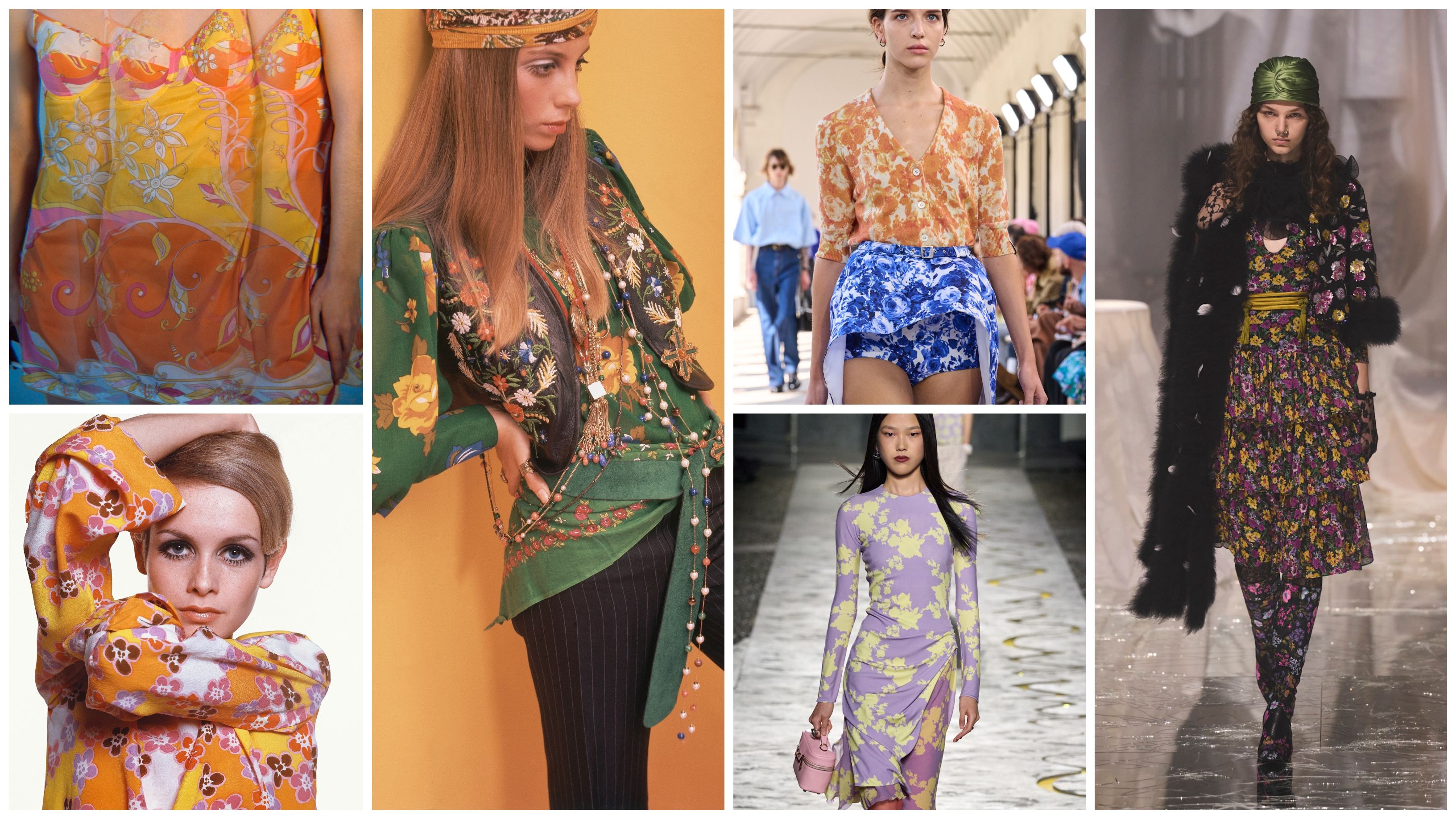
A pendulum swing away from the ‘50s prim-and-proper style, ‘60s fashion celebrated daring color combinations and free-spirited fun, which manifested in bright daisy prints and colorful clusters of wild flowers. The collections from Bally, Versace, and Valentino felt like a continuation of the decade’s uninhibited flower power mood, with prints in every possible spring color combination and stark graphic outlines.
Prairie Patterns
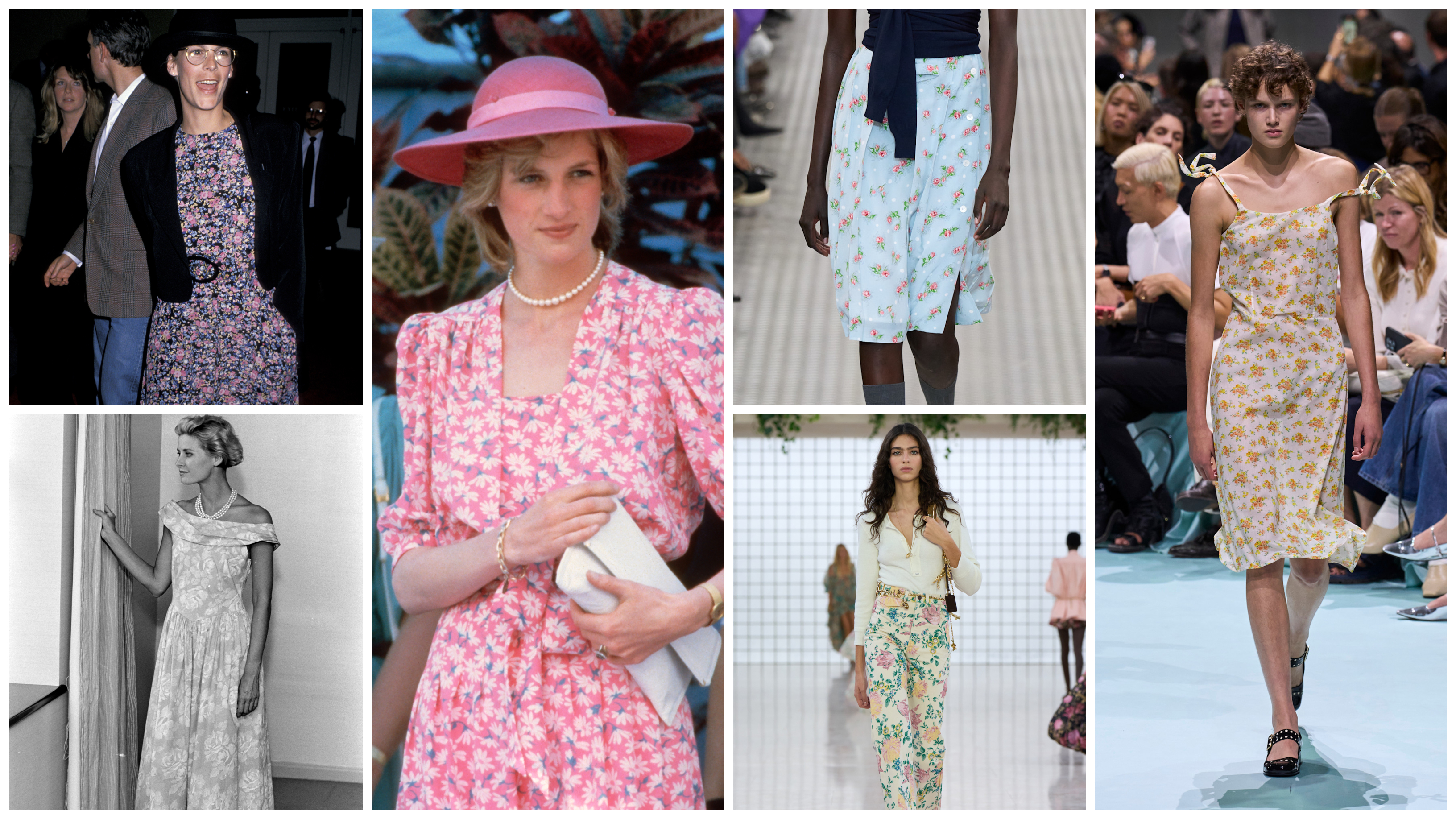
Alongside sharp shoulder pads and puffball bubble skirts, prairie dresses detailed with simplistic flower motifs were a defining fashion trend of the ‘80s. Credit for the country-inspired look largely goes to British heritage brand Laura Ashley, whose floral frocks were a favorite of Princess Diana of Wales and captured the period costuming of The Little House on the Prairie, a smash-hit series during the decade. Chloe, Miu Miu, and Prada gave '80s-era prairie prints a modern refresh by integrating the punched-up pastels of spring 2025’s color trends and foregoing puff sleeves and Peter Pan collars.




